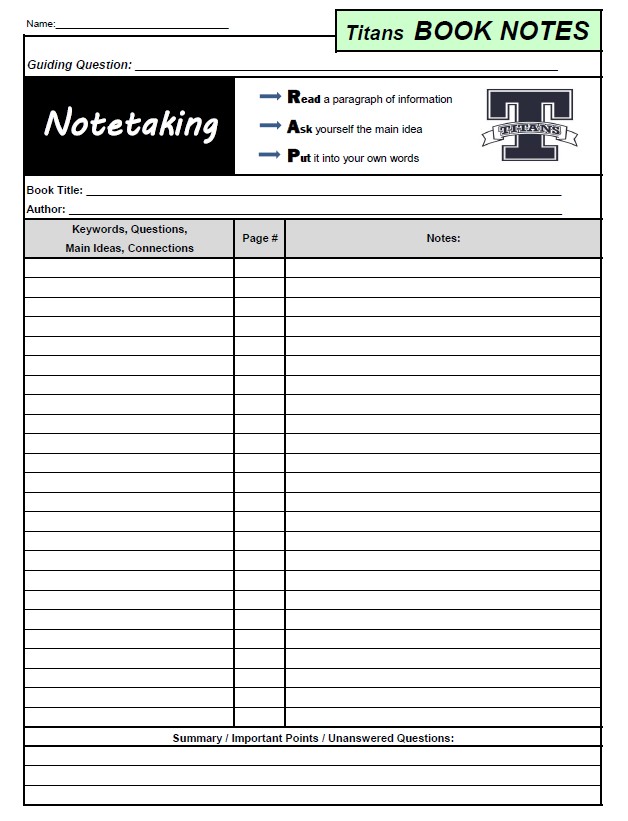Notetaking 101
GETTING STARTED:
- Ask yourself: What are you trying to find out? What is your GUIDING QUESTION?
- Your notes should be in POINT FORM – no sentences. Leave out articles (a, an, the), and any other words not critical to your understanding. Develop a shorthand of your own, such as using “&” for the word “and”, or by removing vowels from words, or creating a symbol for “ion” that you put at the end of all those long words that end with “ion”.
- USE YOUR OWN WORDS! This ensures that you actually understand the material, and that you will be less likely to accidentally paraphrase or copy words from the text.
- Pull out main ideas, key points, dates, and people, and write them in the left column.
- Skip a line between ideas and topics.
- Use quotations from experts to strengthen your arguments or position. Collect and cite the quotations in your notes.
- If you have found the same information in more than one source…Good! Cite both / all sources. This adds strength to your arguments / evidence.
- Complete your Works Cited information as you go using the Resource Consulted List.
- See: Bibliographies, Works Cited & Citation Guides for more information.
- Not sure what plagiarism is ??? See: Plagiarism
- See: Research Model for information on the process of research.
TITANS NOTES / BOOK NOTES:
Use the following templates when notetaking;
- NOTES_Revised Mar2021 – when using internet sources, and BOOK NOTES – when using book sources. The document Digital Sources Research List is for keeping track of your various sources.
- BOOKNOTES
- NOTES_Revised Mar2021
- Digital Sources Research List
 |  |  |

